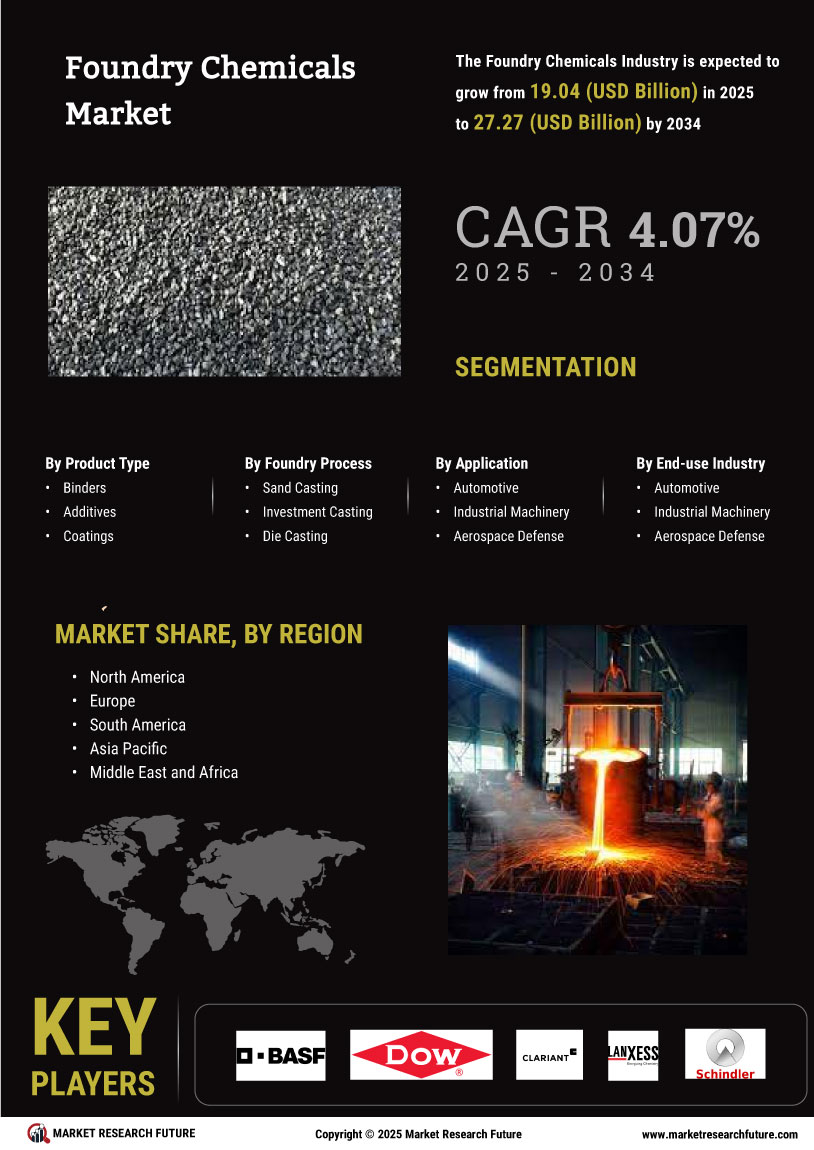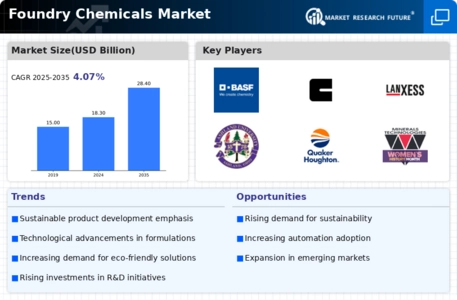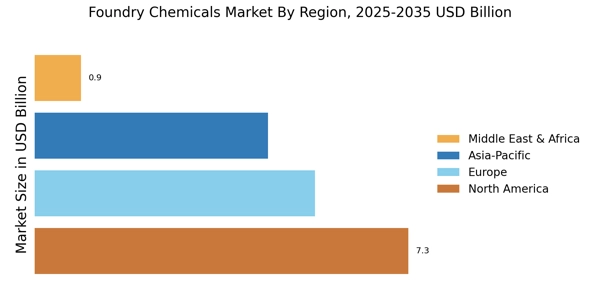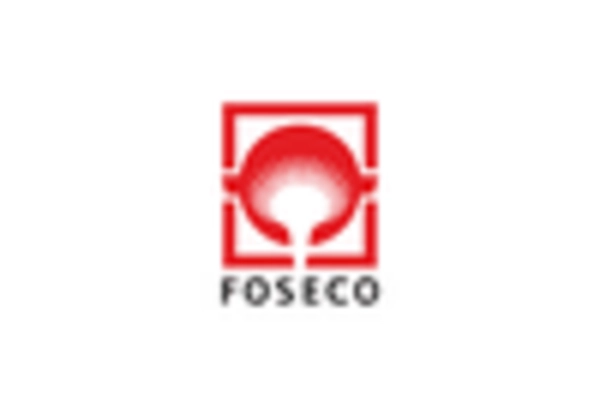Expansion of Construction Activities
The expansion of construction activities across various regions is likely to bolster the Foundry Chemicals Market. As urbanization accelerates, the demand for construction materials, including those produced using foundry chemicals, is expected to rise. In 2025, the construction sector is projected to witness a growth rate of approximately 5%, which could translate into increased consumption of foundry chemicals used in concrete, steel, and other building materials. This growth is indicative of a broader trend where infrastructure development is prioritized, thereby creating a robust market for foundry chemicals. The Foundry Chemicals Market may need to align its offerings to cater to the specific needs of the construction sector, ensuring that products meet regulatory standards and performance expectations.
Rising Demand for Lightweight Materials
The increasing demand for lightweight materials in various industries, particularly in automotive and aerospace, appears to be a significant driver for the Foundry Chemicals Market. As manufacturers seek to enhance fuel efficiency and reduce emissions, the need for advanced foundry chemicals that facilitate the production of lightweight components is likely to grow. This trend is underscored by the automotive sector's shift towards electric vehicles, which often require specialized materials. In 2025, the market for lightweight materials is projected to reach substantial figures, further propelling the foundry chemicals sector. Consequently, the Foundry Chemicals Market is expected to adapt to these evolving requirements, focusing on innovative solutions that meet the specifications of lightweight applications.
Growth in Automotive and Aerospace Sectors
The growth in the automotive and aerospace sectors is poised to significantly impact the Foundry Chemicals Market. As these industries expand, the demand for high-performance materials and components is expected to increase, driving the need for specialized foundry chemicals. In 2025, the automotive sector is projected to grow at a rate of around 4%, while the aerospace industry may see even higher growth due to rising air travel and defense spending. This trend suggests that the Foundry Chemicals Market must focus on developing advanced materials that meet the stringent requirements of these sectors, including durability, weight reduction, and thermal resistance. The interplay between these industries and foundry chemicals is likely to create new opportunities for innovation and market expansion.
Technological Innovations in Foundry Processes
Technological innovations in foundry processes are anticipated to drive the Foundry Chemicals Market significantly. Advancements such as 3D printing and automation are transforming traditional foundry operations, leading to increased efficiency and reduced waste. In 2025, the integration of smart technologies is expected to enhance production capabilities, thereby increasing the demand for specialized foundry chemicals that support these new processes. The ability to produce complex geometries and customized components is likely to attract a wider range of industries, further expanding the market. As these technologies evolve, the Foundry Chemicals Market must adapt to provide innovative solutions that align with the changing landscape of foundry operations.
Regulatory Compliance and Environmental Standards
Regulatory compliance and environmental standards are becoming increasingly stringent, which appears to be a driving force for the Foundry Chemicals Market. Manufacturers are compelled to adopt eco-friendly chemicals and processes to meet these regulations, particularly in regions where environmental protection is prioritized. In 2025, the market for green foundry chemicals is expected to grow as companies seek to minimize their environmental footprint. This shift not only aligns with regulatory requirements but also caters to the growing consumer demand for sustainable products. Consequently, the Foundry Chemicals Market is likely to see a rise in the development and adoption of environmentally friendly chemicals that comply with these evolving standards.


















Leave a Comment